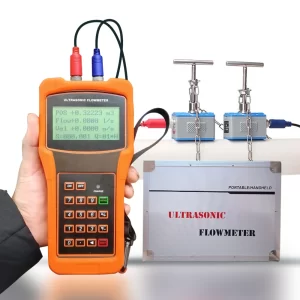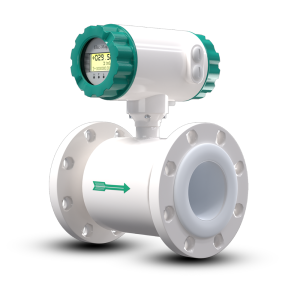Best Electromagnetic Flow Meter for Wastewater Treatment Plants [2025 Buyer’s Guide]
In the world of wastewater treatment, accuracy, durability, and cost-efficiency are everything. One piece of equipment that plays a vital role in making these systems run smoothly is the electromagnetic flow meter—often referred to as a mag meter. These meters are the go-to solution for measuring the flow of conductive fluids, especially in wastewater treatment plants, where conditions can be harsh and flow profiles unpredictable.
Whether you’re upgrading your current system or setting up a new treatment plant, choosing the best electromagnetic flow meter for wastewater in 2025 could significantly impact your plant’s performance, operational cost, and compliance with environmental regulations.
Let’s dive deep into everything you need to know before making a decision.
What Is an Electromagnetic Flow Meter?
An electromagnetic flow meter is a device that measures the flow rate of liquids using Faraday’s Law of Electromagnetic Induction. When a conductive liquid passes through a magnetic field inside the meter, a voltage is generated. This voltage is proportional to the velocity of the fluid, allowing the system to accurately determine flow rates.
The beauty of this technology? No moving parts. That means less maintenance, longer life cycles, and more reliability in applications like wastewater where the fluid may contain solids or sludge.
Why Use Electromagnetic Flow Meters in Wastewater Treatment Plants?
Wastewater treatment is not a clean job. It involves slurries, sludge, suspended solids, corrosive chemicals, and highly variable flow conditions. Most other flow meter technologies either clog, wear out, or give inaccurate readings in these environments.
Here’s why electromagnetic flow meters are ideal:
-
Non-intrusive design: Full-bore meters create no obstruction to flow.
-
Highly accurate: Most models offer ±0.2% to ±0.5% accuracy.
-
Handles dirty fluids: Works efficiently even with solids, debris, or biological matter.
-
Corrosion-resistant materials: Liners like PTFE and electrodes like Hastelloy offer excellent chemical resistance.
-
Long operational life: Ideal for long-term deployments in harsh conditions.
Top 2025 Features to Look for in a Wastewater Flow Meter
If you’re planning to purchase a mag meter this year, keep an eye out for the following critical features:
1. IP68 Enclosure Protection
Many wastewater environments are flood-prone or buried underground. An IP68-rated flow meter ensures total dust protection and full water submersion resistance.
2. Self-Cleaning Electrodes
Wastewater can be sticky and full of debris. Self-cleaning features prevent electrode fouling, ensuring long-term accuracy with minimal maintenance.
3. Smart Communication Protocols
Look for meters with Modbus RTU, HART, Profibus, or EtherNet/IP. These allow seamless integration into your SCADA or PLC system.
4. Chemical-Resistant Liners
PTFE, PFA, and hard rubber are common. Choose the liner based on the chemical composition of the fluid you’ll be measuring.
5. Empty Pipe Detection
This ensures no false readings when the pipe isn’t fully charged, a common issue in batch processing or low-flow systems.
Top 5 Electromagnetic Flow Meters for Wastewater in 2025
Here are the best-in-class models that wastewater professionals are turning to in 2025:
1. Best instrument BST-EM Electromagnetic Flow Meter
Why it’s great:
This is Best instrument’ flagship solution for water and wastewater. It features a durable rubber liner, IP68 protection, and full modularity.
Standout Features:
-
Built-in grounding electrodes
-
Diagnostic functions
-
Highly accurate even at low flow
Best for:
Municipal wastewater treatment plants.
2. Endress+Hauser Proline Promag W 400
Why it’s great:
Backed by Endress+Hauser’s Heartbeat Technology, it’s a smart, self-monitoring system that ensures maximum uptime and reliability.
Standout Features:
-
Full-bore design with no pressure loss
-
Real-time health diagnostics
-
Remote access and control
Best for:
Facilities requiring high connectivity and advanced diagnostics.
3. ABB ProcessMaster FEP300
Why it’s great:
Engineered specifically for the water and wastewater industries, it offers excellent value for performance and long-term durability.
Standout Features:
-
High corrosion resistance
-
Backlit display
-
Hot-tappable electrodes for easy maintenance
Best for:
Industrial wastewater with chemical exposure.
4. Yokogawa AXG Series
Why it’s great:
Offers exceptionally high accuracy (±0.2%), ideal for operations where every drop counts.
Standout Features:
-
Advanced diagnostics
-
Intuitive touch panel
-
Titanium electrode option for high-corrosive media
Best for:
Pharmaceutical, chemical, and challenging wastewater environments.
5. KROHNE OPTIFLUX 2100
Why it’s great:
A cost-effective solution without compromising on build quality. Designed for basic water and wastewater applications.
Standout Features:
-
Compact and robust
-
Pre-configured setup
-
Optional Modbus output
Best for:
Budget-conscious municipal projects and OEM installations.
Installation Considerations
Even the best flow meter can underperform if not installed properly. Here are a few tips:
-
Install in a full pipe: The pipe must be completely filled with fluid for accurate readings.
-
Straight pipe runs: Ensure adequate straight lengths upstream (5D) and downstream (3D).
-
Avoid air pockets: Place the meter at the lowest point in a vertical pipe to eliminate bubbles.
-
Grounding rings: Always use grounding when measuring in plastic or lined pipes.
Maintenance & Calibration Tips
Although mag meters are low-maintenance, don’t ignore routine checks:
-
Inspect electrodes quarterly for buildup.
-
Calibrate annually for mission-critical applications.
-
Use manufacturer diagnostics or third-party software to monitor performance.
Some modern meters even come with predictive maintenance alerts, which tell you when parts need servicing before they fail.
How to Choose the Right Model for Your Facility
When selecting the right electromagnetic flow meter, consider:
-
Type of wastewater: Industrial effluents may require high-end materials like PTFE + Hastelloy.
-
Pipe size and flow range: Match your pipe diameter and flow rate for optimal accuracy.
-
Budget vs features: Don’t overpay for features you won’t use. But don’t skimp on reliability.
-
Certifications and standards: Ensure your flow meter complies with ISO, ANSI, or EPA regulations.
Pricing Expectations for 2025
Here’s a rough guide to 2025 prices:
| Flow Meter Model | Estimated Price Range (USD) |
|---|---|
| Best instrument BST-EM | $1,000 – $5,500 |
| Endress+Hauser Promag W 400 | $3,000 – $6,500 |
| ABB FEP300 | $1,500 – $3,500 |
| Yokogawa AXG Series | $4,000 – $7,000 |
| KROHNE OPTIFLUX 2100 | $1,000 – $2,200 |
Note: Prices vary based on configuration, materials, communication modules, and region.
Conclusion
Investing in the right electromagnetic flow meter for wastewater treatment is one of the most impactful decisions you’ll make for your facility in 2025. With smart features, robust build quality, and compatibility with modern control systems, the meters we’ve listed above represent the top-tier choices in the industry.
Whether you need extreme corrosion resistance, plug-and-play integration, or budget flexibility, there’s a meter designed to meet your exact needs.
We are a manufacturer of automatic flow meters with many years of experience in the industry. We have strong independent research and development capabilities and are a leader in the flow meter industry. Our main products include electromagnetic flow meters, vortex flow meters, turbine flow meters, ultrasonic flow meters, Coriolis flow meters, various solenoid valves, level meters, control units and valves, etc. Welcome to purchase –Best Instrument





